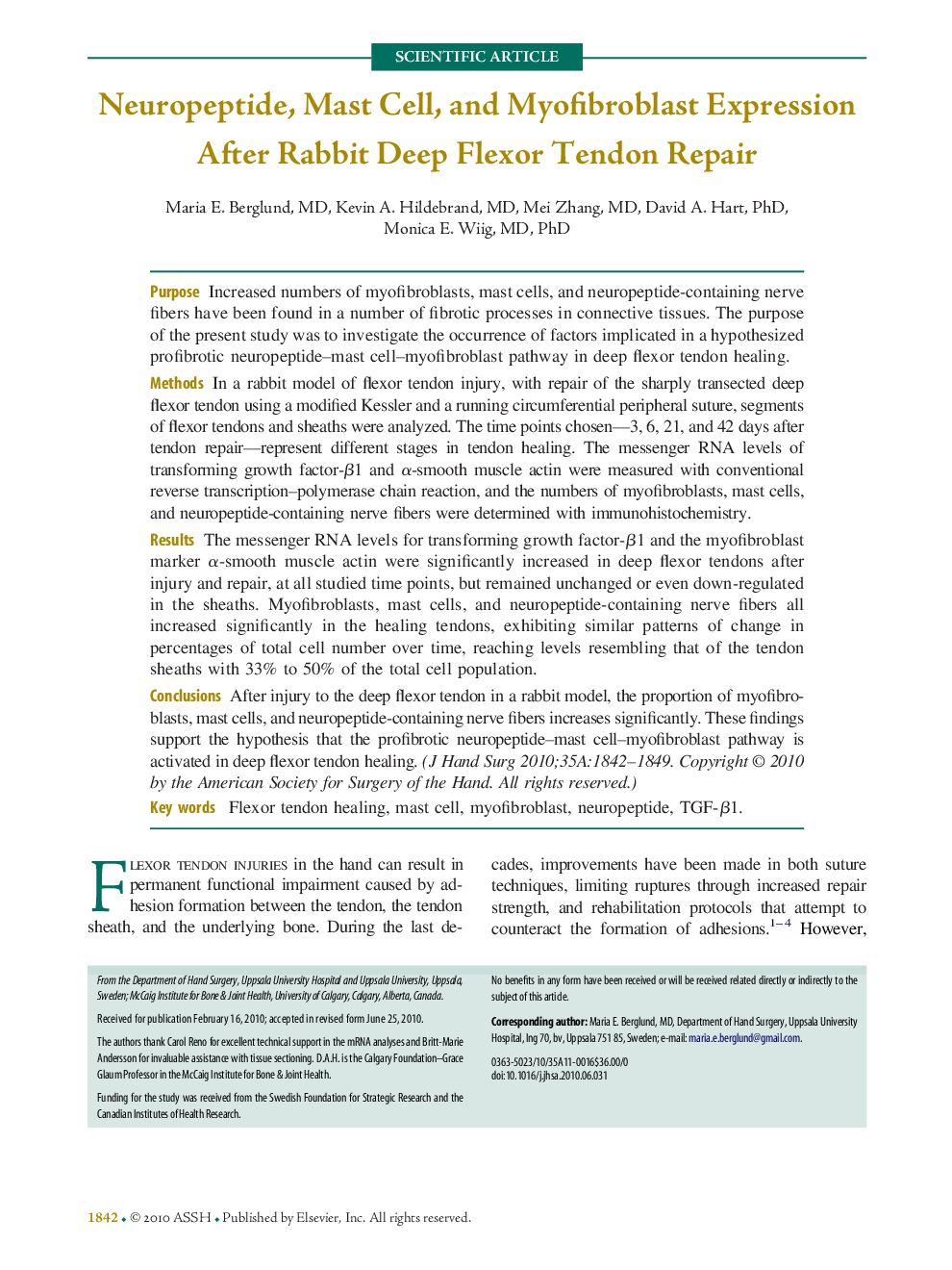| کد مقاله | کد نشریه | سال انتشار | مقاله انگلیسی | نسخه تمام متن |
|---|---|---|---|---|
| 4070039 | 1604415 | 2010 | 8 صفحه PDF | دانلود رایگان |

PurposeIncreased numbers of myofibroblasts, mast cells, and neuropeptide-containing nerve fibers have been found in a number of fibrotic processes in connective tissues. The purpose of the present study was to investigate the occurrence of factors implicated in a hypothesized profibrotic neuropeptide–mast cell–myofibroblast pathway in deep flexor tendon healing.MethodsIn a rabbit model of flexor tendon injury, with repair of the sharply transected deep flexor tendon using a modified Kessler and a running circumferential peripheral suture, segments of flexor tendons and sheaths were analyzed. The time points chosen—3, 6, 21, and 42 days after tendon repair—represent different stages in tendon healing. The messenger RNA levels of transforming growth factor-β1 and α-smooth muscle actin were measured with conventional reverse transcription–polymerase chain reaction, and the numbers of myofibroblasts, mast cells, and neuropeptide-containing nerve fibers were determined with immunohistochemistry.ResultsThe messenger RNA levels for transforming growth factor-β1 and the myofibroblast marker α-smooth muscle actin were significantly increased in deep flexor tendons after injury and repair, at all studied time points, but remained unchanged or even down-regulated in the sheaths. Myofibroblasts, mast cells, and neuropeptide-containing nerve fibers all increased significantly in the healing tendons, exhibiting similar patterns of change in percentages of total cell number over time, reaching levels resembling that of the tendon sheaths with 33% to 50% of the total cell population.ConclusionsAfter injury to the deep flexor tendon in a rabbit model, the proportion of myofibroblasts, mast cells, and neuropeptide-containing nerve fibers increases significantly. These findings support the hypothesis that the profibrotic neuropeptide–mast cell–myofibroblast pathway is activated in deep flexor tendon healing.
Journal: The Journal of Hand Surgery - Volume 35, Issue 11, November 2010, Pages 1842–1849